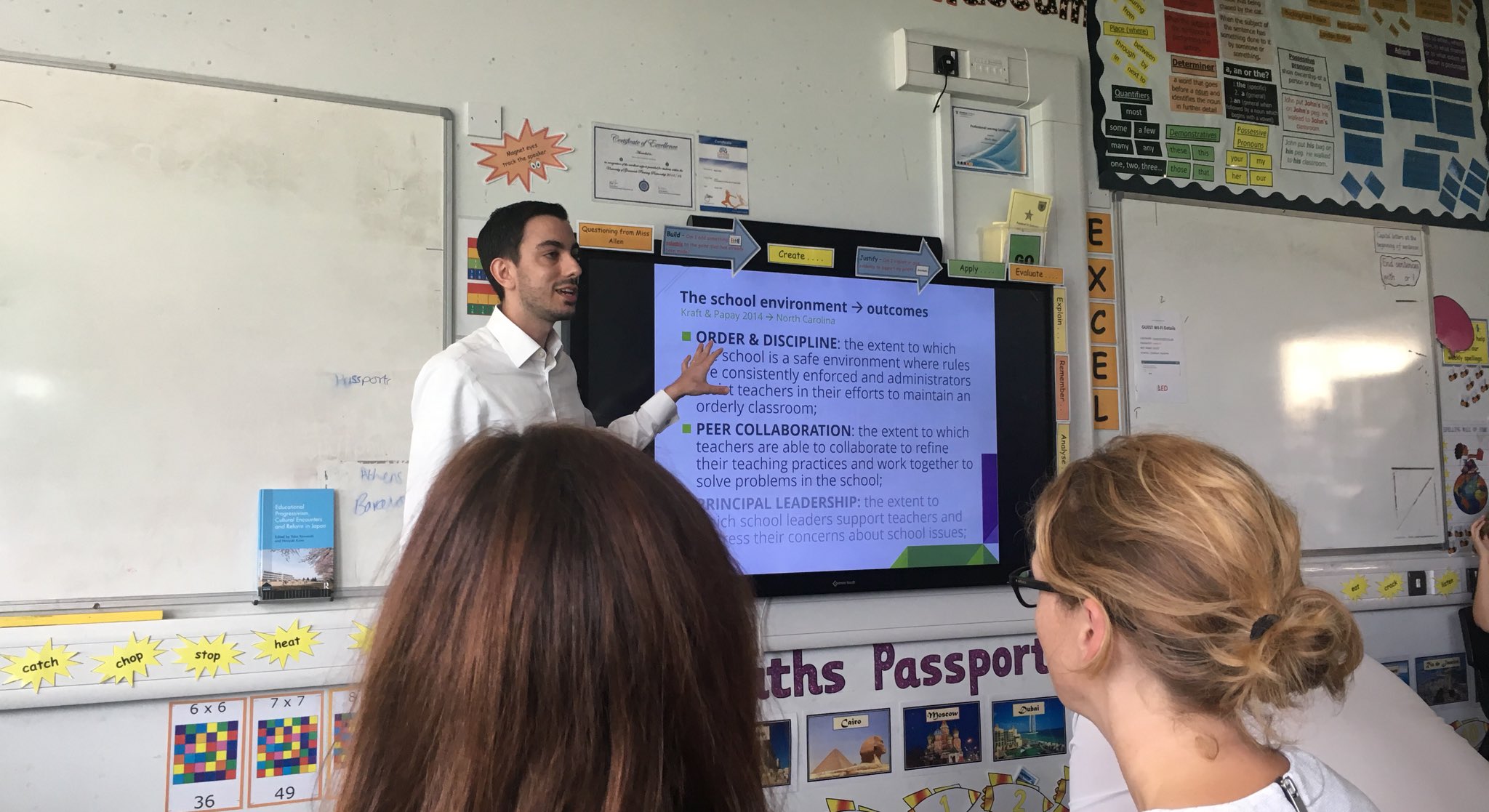TDT has been at the forefront of teacher development for over ten years. This blog is part of a series that aims to share emerging thinking and practice around using AI tools as part of the education sector’s approach to building expert schools.
In this piece, we offer thoughts on what you might consider when developing or supporting teachers using AI-powered tools.
1. Advice (including this blog) will go out of date quickly
This is because the technology is developing so fast. This is not an area you can learn about once and then ignore for a while.
Mitigation:
You need to monitor changes and that means connecting with trusted organisations who will share updates and help you make sense of this. Keep an eye on the TDT blog series, check out the ISTE AI resources (US-based), and consider also reviewing:
-
- The Skinny on AI for Education by Professor Rose Luckin and Educate Ventures Research
- Dr Ethan Mollick writes regular short blogs on AI including its use in education
2. Datasets are not made with children in mind
Many generative AI tools are trained on datasets that are not tailored toward children and results may be unsuitable for some ages, so caution needs to be exercised in their use. The data they are trained on will have a range of human biases, so there is a risk that results could include anything from overt to subtle examples of racism, political biases, phobias or bigotry, cultural biases and more.

Mitigation:
Carefully check the age recommendations of each tool before considering using it with or in front of children. Ensure that all output from AI tools is carefully vetted by teachers or other expert staff before sharing.
3. A Teaching AI is not the same thing as a teacher
AI tools will not necessarily explain ideas in the same order as an expert teacher, nor will they necessarily address misconceptions, sequence learning or use the right level of vocabulary as an expert teacher. The data they are trained on includes significant amounts of writing with misconceptions or outdated ideas about teaching, for example including ideas in their outputs about ‘learning styles’ or ‘left-brain, right-brain’ thinking when both have been fully debunked – you can’t assume that pedagogical or curriculum advice, lessons plans nor resources will be aligned with latest research.
Mitigation:
Rather than using generative AI to generate advice to take at face value, use it as stimulus for conversation about how closely aligned it is to latest research and how it could be adapted or improved for teachers.
4. Data Privacy and Intellectual Property
There are significant questions about data privacy and intellectual property, with some tools taking everything entered into them to be used for further training of the AI and several ongoing court cases around the world with authors and artists taking action against AI companies for using their data for training the systems without permission. It is important to tread carefully here and be mindful of a fast-moving area in which many countries are still trying to work out how to legislate to catch up with the changes.
Mitigation:
Keep an eye on the news in this area and be sure to attribute anything created by generative AI tools to the tool itself, being ready to remove or replace content if the law changes in coming months and years.
5. Developments will be superseded very quickly.
Building tools with fast-moving AI technology involves working out how to give current tools the right instructions and deal with the shortcomings. But overly-intensive work to develop AI tools right now could easily be out of date in a few months when new AI tools make the work redundant. This suggests that the best approach right now is some experimentation and ongoing learning rather than making huge investments or changes.
For example: spending weeks on AI-proofing homework tasks now may only work with existing tools, but it’s entirely possible that in 3-6 months, new tools make even the new homework tasks doable with AI. Similarly, spending a long time redeveloping lessons to include AI tools could also be out of date very rapidly.

Find out about the AI tool we’re developing for school leaders
Mitigation:
For most smaller organisations, like schools or trusts, now is a good time to be experimenting and exploring rather than investing heavily based on what the current technology can and can’t do. Use free or inexpensive tools where you can and try and avoid doing too much custom coding. Options for light-touch development or integration could be low- or no-code solutions such as Zapier, or just watch and wait to see what others do!
6. Aim for AI-with, not AI-instead.
There’s a risk that if AI tools try and replace what adults (including teachers and leaders) are doing, then we won’t have such control over quality, we’ll be depriving children of potentially expert-created resources and we may both disempower and deprofessionalise teachers. This could lead to even greater issues with quality and staff morale and retention.
Mitigation:
Rather than trying to build or use tools to replace adult thinking or actions, seek ways for the AI to be more of a side-kick or co-pilot. For example, rather than building or using tools that plan lessons for teachers, try instead using generative AI tools for brainstorming ideas, giving feedback on plans or coming up with interesting variations to consider.
Instead of trying to get AI to do administrative tasks (such as report-writing) instead of teachers, perhaps instead use it to generate suggestions that speed up teachers’ work and help them consider different options. In this way you can support morale, build expertise and retain and build quality.
7. Consider training and conditions.
Everyone working in schools is incredibly stretched and busy, so for teachers to consider how to take on new ideas or adapt their existing practice needs the right culture and conditions in schools. It’s important that key elements are being planned for, including effective use of Inset days, twilight and whole staff meetings, team/year/subject meetings, line management & appraisal, school improvement planning, evaluation of impact of changes, access to high quality research, career development conversations, links to governance and so on.
Mitigation:
Review your current practice in this area either with free tools like the Teacher Working Environment Survey or our “Expert Schools Programme”


